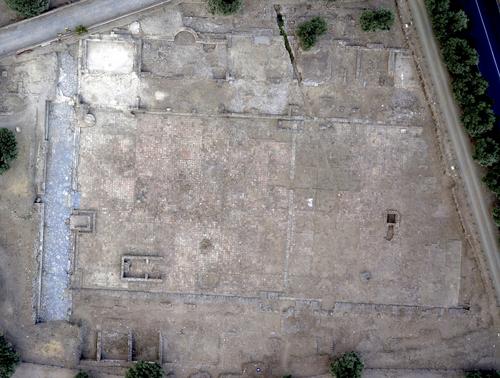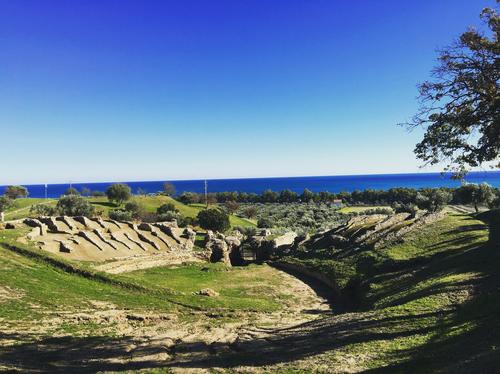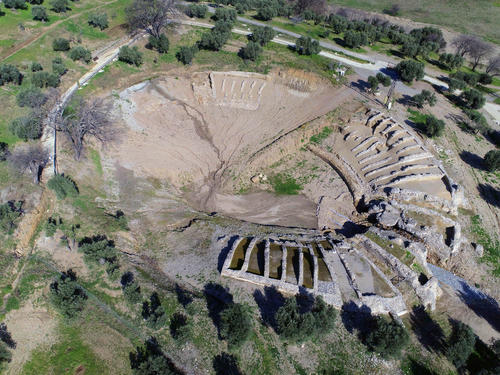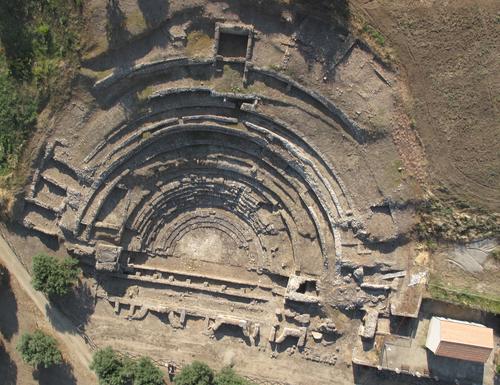Scolacium: Long-Term Dynamics of a Roman Colony in Southern Italy
Fig. 1. Scolacium, forum
Bildquelle: © Archive Scolacium Project
Fig. 2. Scolacium, amphitheatre
Bildquelle: © Archive Scolacium Project
Fig. 3. Scolacium, amphitheatre
Bildquelle: © Archive Scolacium Project
Fig. 4. Scolacium, theater
Bildquelle: © Archive Scolacium Project
Scolacium – Urbanism, Monumental Transformation, and Long-Term Dynamics of a Roman Colony in Southern Italy
Principle Investigator: PD Dr. Chiara Blasetti Fantauzzi
Excavation in cooperation with the Museo e Parco Archeologico Nazionale di Scolacium (Dr. Elisa Nisticò) and the Università degli Studi della Tuscia (Prof. Dr. Salvatore De Vincenzo)
Along with Taranto, Capua, and Carthage, Scolacium is one of the few colonies established as part of the colonization program initiated by Gaius Gracchus in the latter half of the 2nd century BCE. The Gracchan colony was founded on the site of an earlier Greek settlement known as Skylletion, which, according to Strabo, was established by the Athenians (Strab. 6, 1, 10). Scolacium preserves remarkable remains of its forum (fig. 1), amphitheater (figs. 2, 3), and theater (fig. 4), excavated between the 1960s and 2000s (Arslan 1998; Malacrino 2005; Spadea 1989, 2005). Despite these significant discoveries, the city’s diachronic development remains only partially understood.
The new project explores the city’s evolution from its Greek origins to Late Antiquity. The new research project addresses key questions:
- How can the Greek colony of Skylletion be reconstructed?
- How did the city evolve from its foundation through Late Antiquity?
- What strategies of reuse and transformation shaped its monuments?
- How did construction logistics and material supply reflect provincial integration?
Recent geophysical surveys (2024), conducted as part of this project, have revealed previously undocumented structures, underscoring the need for a systematic reassessment.
Methods
The project combines excavation, survey, and digital technologies, including:
- Geophysical prospection (GPR and magnetometry)
- LiDAR and drone-based photogrammetry
- Targeted stratigraphic trenches in the Forum Square, where the remains of the Capitolium have been unearthed; in the Theatre; in the Amphitheater; and in the area surrounding the Forum
- Study of ceramics, construction techniques, and spolia
- GIS-based data integration and 3D modeling
Field schools and collaborative exhibitions with the Parco Archeologico di Scolacium are integral components of the project.
Expected Outcomes
- A revised topographic map of the city
- The complete structure of the forum, including all its monuments
- An updated chronology of the city's urban development and monuments
- New insights into reuse and spolia in Late Antiquity
- Digital models for research, teaching, and public outreach
- A sustainable framework linking excavation, education, and heritage dissemination
Through this project, Scolacium will emerge as a key case study of Roman colonial foundations and their long-term transformations in southern Italy.
BIBLIOGRAPHY
Arslan 1998: E. A. Arslan, Urbanistica di Scolacium, RTopAnt 8, 1998, 79–110.
Malacrino 2005: C. G. Malacrino, Il teatro romano di Scolacium: contributo per una rilettura architettonica e topografica, RdA 29, 2005, 97–141.
Spadea 1989: R. Spadea, Da Skylletion a Scolacium. Il Parco Archeologico della Roccelletta (Roma 1989).
Spadea 2005: R. Spadea, Scolacium: una città romana in Calabria. Il museo e il parco archeologico (Milano 2005).




